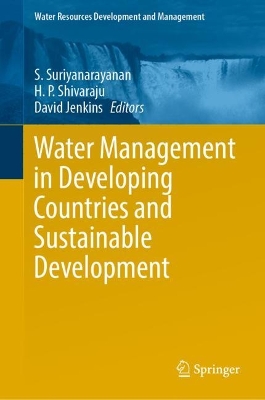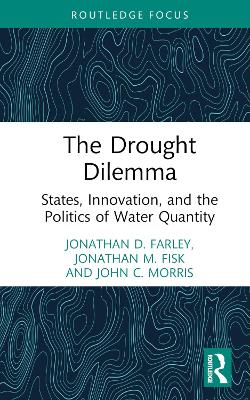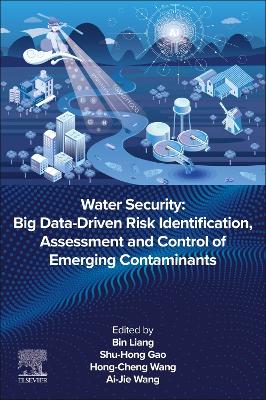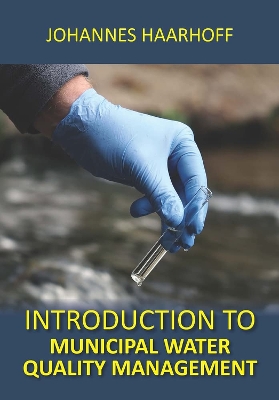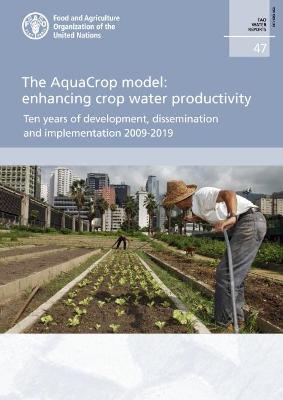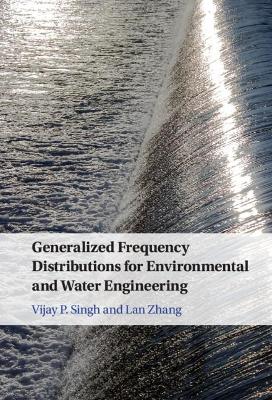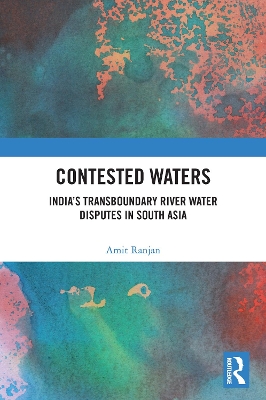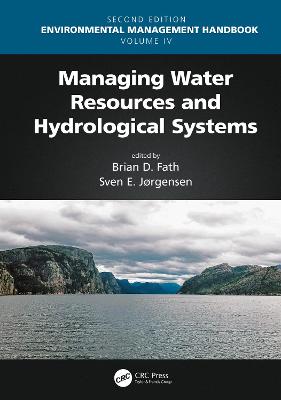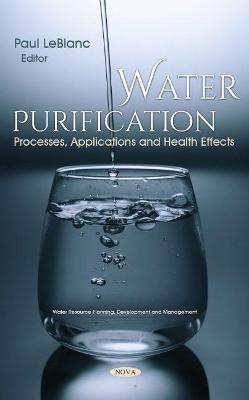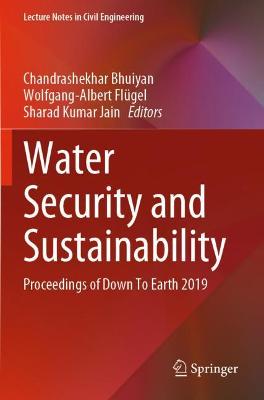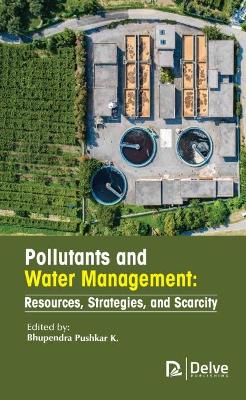Irrigation Governance Challenges in the Mediterranean Region: Learning from Experiences and Promoting Sustainable Performance
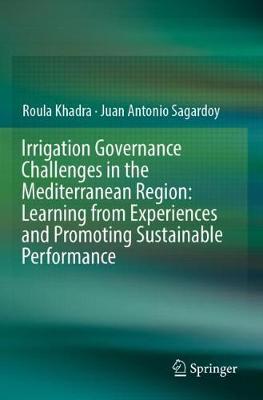 portes grátis
portes grátis
Irrigation Governance Challenges in the Mediterranean Region: Learning from Experiences and Promoting Sustainable Performance
Sagardoy, Juan Antonio; Khadra, Roula
Springer Nature Switzerland AG
08/2020
225
Mole
Inglês
9783030135560
15 a 20 dias
487
Acknowledgements
Executive Summary
List of Abbreviations
List of Boxes
List of Figures
List of Tables
Chapter 1. Introduction
1.1. Working approach in the conception of the book
1.2. Selection process of focus countries
1.3. Focus of the publication
1.4. Objectives of the publication
1.5. Description of the content
Chapter 2. National irrigation programs and their governance under water scarcity conditions: an analytical perspective
2.1. Introduction
2.2. Question 1: How is water scarcity influencing water resources strategies for meeting the present and future demands of all water uses?
2.3. Main water uses: present figures
2.4. Estimating future water consumptions for all water uses: examples from Tunisia and Turkey
2.5. What are the priority action programs of the national irrigation plans?
2.6. Comparative analysis of the national irrigation programs
2.7. Roles and responsibilities of the irrigation governance organizations: a review
2.8. Expertise and know-how in the development and management of irrigated agriculture
2.9. How is the governance of the main national irrigation programs organized?
2.10. Main lessons learnt
2.11 A Window on Groundwater Governance in the Mediterranean Region
References
Chapter 3. Irrigation Modernization and Rehabilitation Programs, a spectrum of experiences: Analysis and lessons learnt
3.1 Introduction
3.2 Review of the irrigation modernisation concept
3.3 Brief overview of the irrigation modernization plans in the focus countries
3.4 The span of the irrigation modernization programs in the focus countries
3.5 Are the modernization programs undertaken in a participatory manner?
3.6 How is the financing of irrigation modernization approached by different countries?
3.7 What conditions should WUAs meet to be eligible to participate in the irrigation modernization programs?
3.8 What institutional reforms are undertaken by irrigation agencies in order to implement the modernization programs?
3.9 On-farm irrigation modernization: a necessary complement to systems' modernization
3.10 How do modernization processes affect farmers and WUAs' management?
3.11 What are the main results of the irrigation modernization programs?
3.12 Main lessons learnt
References
Chapter 4. Participatory irrigation and institutional reforms in the Mediterranean Region: governance achievements and problems
4.1 Introduction
4.2 Why PIM/IMT programs?
4.3 Brief overview of the main PIM/IMT programs in the Mediterranean Region
4.4 Extension of the area covered by PIM/IMT programs in the Mediterranean Region: insights and analysis
4.5 Political support and legal framework of PIM/IMT programs: significance and implication
4.6 Implementation stages of PIM/IMT programs and progress achieved in the focus countries
4.7 Is rehabilitation/ modernization a necessary condition for the establishment of WUOs?
4.8 What type of farmers' organizational structure is more suitable for PIM/IMT programs?
4.9 What hydraulic levels should be transferred to WUOs?
4.10 What role Irrigation Agencies play in the PIM/IMT processes?
4.10.1 Governing organizations of PIM/IMT programs
4.10.2 Coordination management platforms
4.10.3 Main lessons learnt regarding the role of irrigation agencies in the implementation of PIM/IMT programs
4.11 How successful are PIM/IMT programs?
4.12 Main lessons regarding the evaluation of PIM/IMT programs in the Mediterranean Region
References
Chapter 5. Improving local governance: problems and solutions
5.1. Introduction
5.2. Problems and solutions related to the physical infrastructure of the irrigation system
5.3. Problems and solutions related to the WUOs' Structure
5.4. Governing bodies of the WUO and respective responsibilities
5.5. Problems and solutions related to the weak technological and management capacity of WUOs
5.6. Problems and Solutions related to the Inadequate Financial Management of WUOs
5.7. Main lessons learnt
5.8. Information Management Systems (IMSs) and Decision Support Systems (DSSs) for irrigation systems management
5.9. Case study: Application of the diagnostic performance assessment to a Water Users' Cooperative (WUC) managing an irrigation system in Jordan
References132
Chapter 6. Private Public Partnerships (PPPs) in Irrigation. Myth or promising reality?
6.1. Introduction
6.2. From privatization to PPP
6.3. Improving water services and sanitation. A new drive for PPP?
6.4. Review of some concepts associated with private contracts
6.5. Overview of the PPPs in the water sector in the Mediterranean Region
6.6. What lessons to learn from the implementation of the PPPs?
6.7. PPP case studies on irrigation development in the Mediterranean Region
6.8. Wrap up of the PPP experiences in the development and management of irrigation projects
References
Chapter 7. M&E systems for PIM/IMT programs - Review of experiences and guidance for their application to WUOs
7.1 Introduction
7.2 Defining the framework of an M&E system for assessing PIM/IMT programs
7.3 Review of the main M&E systems developed by International Agencies for the specific purpose of assessing the performance of PIM/IMT
7.4 Assessment of the performance of local WUOs
7.5 Use of scoring systems for evaluation purposes
7.6 Application of a scoring system to evaluate the achievement of outputs and outcomes: An illustrative example
7.7 Main lessons learnt
References
Acknowledgements
Executive Summary
List of Abbreviations
List of Boxes
List of Figures
List of Tables
Chapter 1. Introduction
1.1. Working approach in the conception of the book
1.2. Selection process of focus countries
1.3. Focus of the publication
1.4. Objectives of the publication
1.5. Description of the content
Chapter 2. National irrigation programs and their governance under water scarcity conditions: an analytical perspective
2.1. Introduction
2.2. Question 1: How is water scarcity influencing water resources strategies for meeting the present and future demands of all water uses?
2.3. Main water uses: present figures
2.4. Estimating future water consumptions for all water uses: examples from Tunisia and Turkey
2.5. What are the priority action programs of the national irrigation plans?
2.6. Comparative analysis of the national irrigation programs
2.7. Roles and responsibilities of the irrigation governance organizations: a review
2.8. Expertise and know-how in the development and management of irrigated agriculture
2.9. How is the governance of the main national irrigation programs organized?
2.10. Main lessons learnt
2.11 A Window on Groundwater Governance in the Mediterranean Region
References
Chapter 3. Irrigation Modernization and Rehabilitation Programs, a spectrum of experiences: Analysis and lessons learnt
3.1 Introduction
3.2 Review of the irrigation modernisation concept
3.3 Brief overview of the irrigation modernization plans in the focus countries
3.4 The span of the irrigation modernization programs in the focus countries
3.5 Are the modernization programs undertaken in a participatory manner?
3.6 How is the financing of irrigation modernization approached by different countries?
3.7 What conditions should WUAs meet to be eligible to participate in the irrigation modernization programs?
3.8 What institutional reforms are undertaken by irrigation agencies in order to implement the modernization programs?
3.9 On-farm irrigation modernization: a necessary complement to systems' modernization
3.10 How do modernization processes affect farmers and WUAs' management?
3.11 What are the main results of the irrigation modernization programs?
3.12 Main lessons learnt
References
Chapter 4. Participatory irrigation and institutional reforms in the Mediterranean Region: governance achievements and problems
4.1 Introduction
4.2 Why PIM/IMT programs?
4.3 Brief overview of the main PIM/IMT programs in the Mediterranean Region
4.4 Extension of the area covered by PIM/IMT programs in the Mediterranean Region: insights and analysis
4.5 Political support and legal framework of PIM/IMT programs: significance and implication
4.6 Implementation stages of PIM/IMT programs and progress achieved in the focus countries
4.7 Is rehabilitation/ modernization a necessary condition for the establishment of WUOs?
4.8 What type of farmers' organizational structure is more suitable for PIM/IMT programs?
4.9 What hydraulic levels should be transferred to WUOs?
4.10 What role Irrigation Agencies play in the PIM/IMT processes?
4.10.1 Governing organizations of PIM/IMT programs
4.10.2 Coordination management platforms
4.10.3 Main lessons learnt regarding the role of irrigation agencies in the implementation of PIM/IMT programs
4.11 How successful are PIM/IMT programs?
4.12 Main lessons regarding the evaluation of PIM/IMT programs in the Mediterranean Region
References
Chapter 5. Improving local governance: problems and solutions
5.1. Introduction
5.2. Problems and solutions related to the physical infrastructure of the irrigation system
5.3. Problems and solutions related to the WUOs' Structure
5.4. Governing bodies of the WUO and respective responsibilities
5.5. Problems and solutions related to the weak technological and management capacity of WUOs
5.6. Problems and Solutions related to the Inadequate Financial Management of WUOs
5.7. Main lessons learnt
5.8. Information Management Systems (IMSs) and Decision Support Systems (DSSs) for irrigation systems management
5.9. Case study: Application of the diagnostic performance assessment to a Water Users' Cooperative (WUC) managing an irrigation system in Jordan
References132
Chapter 6. Private Public Partnerships (PPPs) in Irrigation. Myth or promising reality?
6.1. Introduction
6.2. From privatization to PPP
6.3. Improving water services and sanitation. A new drive for PPP?
6.4. Review of some concepts associated with private contracts
6.5. Overview of the PPPs in the water sector in the Mediterranean Region
6.6. What lessons to learn from the implementation of the PPPs?
6.7. PPP case studies on irrigation development in the Mediterranean Region
6.8. Wrap up of the PPP experiences in the development and management of irrigation projects
References
Chapter 7. M&E systems for PIM/IMT programs - Review of experiences and guidance for their application to WUOs
7.1 Introduction
7.2 Defining the framework of an M&E system for assessing PIM/IMT programs
7.3 Review of the main M&E systems developed by International Agencies for the specific purpose of assessing the performance of PIM/IMT
7.4 Assessment of the performance of local WUOs
7.5 Use of scoring systems for evaluation purposes
7.6 Application of a scoring system to evaluate the achievement of outputs and outcomes: An illustrative example
7.7 Main lessons learnt
References

